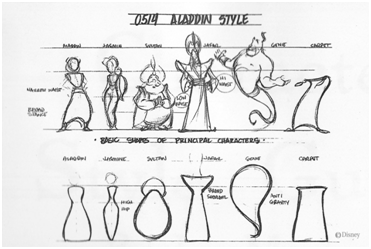Tuesday, 15 March 2016
Drawing Practice: Basic Shapes
In order to effectively gain a proper understanding of the human anatomy in the context of observational drawing, one must know how to break a person down to their most basic shapes, such as triangles, ovals and rectangles. There are many advantages to using simple primitive shapes, most notably they allow the artist to block out posture and build character templates. In character design, a commonly accepted design theory is that form must take priority over function, so by designing a character from basic shapes, the audience is more likely to perceive the design as aesthetically pleasing, as primitives such as ovals and triangles are more visually straightforward.
Constructing a character that needs to be replicated multiple times from primitive shapes can be also be advantageous for the artist and require less effort to accurately replicate from a variety of different perspectives. Primitive shapes give the artist reference when designing in third dimensions, streamlining workflow, which is particularly advantageous for drawing in the context of animation.
Subscribe to:
Post Comments (Atom)

No comments:
Post a Comment